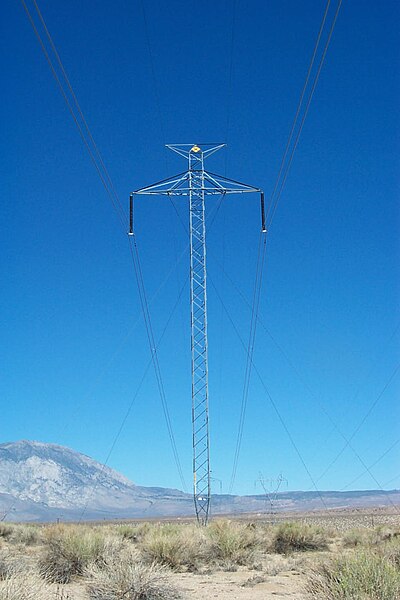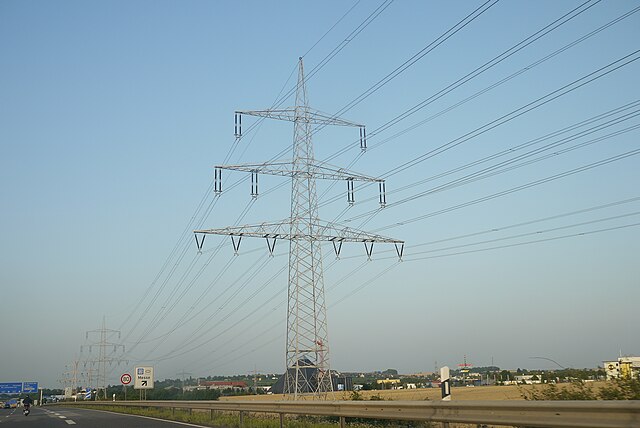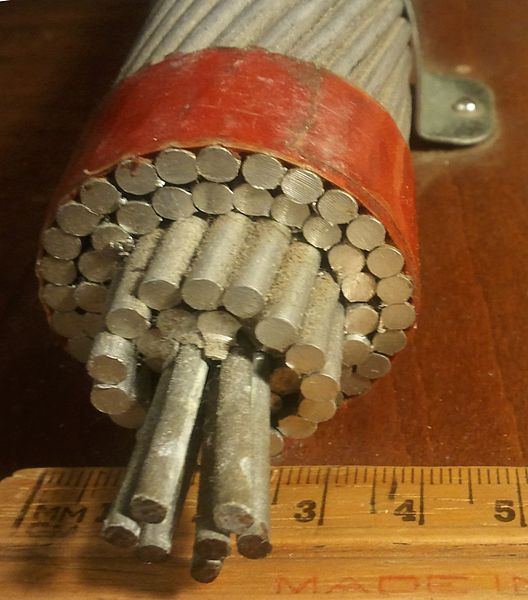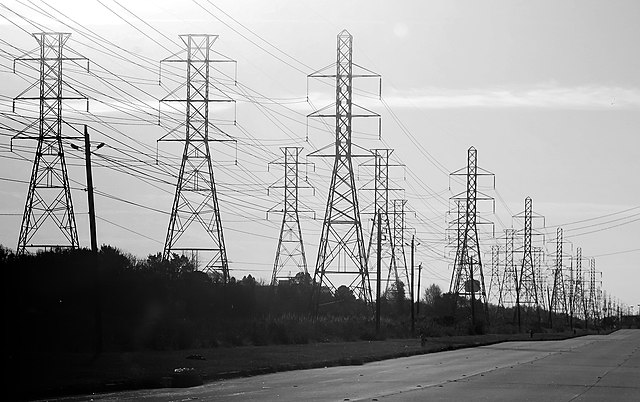The Pacific DC Intertie is an electric power transmission line that transmits electricity from the Pacific Northwest to the Los Angeles area using high voltage direct current (HVDC). The line capacity is 3.1 gigawatts, which is enough to serve two to three million Los Angeles households and represents almost half of the Los Angeles Department of Water and Power (LADWP) electrical system's peak capacity.
The HVDC power line in Los Angeles (shorter tower carrying two wires on the right). The power line crosses Interstate 5 near the interchange with Interstate 210 in Sylmar.
The Pacific DC Intertie along a service road paralleling U.S. Highway 395. Many of the towers of the Intertie are of this simple, slender design
The slender tower's base tapers down to a single point that is bolted to a concrete anchor
The slender tower is supported laterally by four guy-wires
Electric power transmission
Electric power transmission is the bulk movement of electrical energy from a generating site, such as a power plant, to an electrical substation. The interconnected lines that facilitate this movement form a transmission network. This is distinct from the local wiring between high-voltage substations and customers, which is typically referred to as electric power distribution. The combined transmission and distribution network is part of electricity delivery, known as the electrical grid.
A four-circuit, two-voltage power transmission line; Bundled 2-ways
A typical ACSR. The conductor consists of seven strands of steel surrounded by four layers of aluminium.
Three abreast electrical pylons in Webster, Texas
New York City streets in 1890. Besides telegraph lines, multiple electric lines were required for each class of device requiring different voltages.








